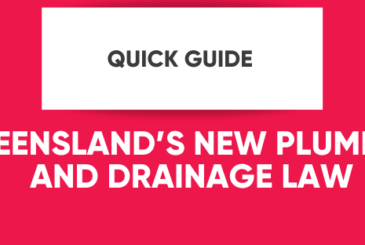
The final deadline for eligible building owners in Queensland to organise a combustible cladding audit has passed. We now enter Stage 3 of the process. Learn more about the process of the audit itself below.
STAGE 3 DEADLINE ENDS OCTOBER 31ST – UNDERSTAND YOUR OBLIGATIONS
Legal Requirements
A recently introduced Queensland legislation (in 2018) in response to concerns over the fire safety threat posed by combustible building cladding mandates that owners of affected buildings seek the assistance of building industry professionals to ensure that they are compliant with combustible cladding legislation.
The specific piece of legislation is the Building and Other Legislation (Cladding) Amendment Regulation (2018). This amendment to the Building Regulation 2006 provides the legal foundation that ensures that all owners of affected buildings carry out an adequate assessment of their building (and potential combustible cladding) with the assistance of a building industry professional.
Part 1 and Part 2: General Assessment and Audit
The initial stages (Part 1 and Part 2) of the combustible cladding audit involved several steps, some of which may have been carried out by the building owner themselves or their building manager. Other factors involved in the general assessment and audit involved:
- The identification of any combustible materials on the affected buildings. During Part 1 of the process this is conducted by the building owner or their building manager. During Part 2 of the process, building owners were required to seek the assistance of a building industry professional.
- Determining whether any identified combustible materials could potentially have an impact on the overall fire safety of the building. Of particular note during this stage will be assessing the overall occupant safety, whether occupants can exit the building and all egress discharge points are safe. This aspect of the building will now be covered in depth in the Part 3 Building Fire Safety Risk Assessment (BFSRA).
- In some cases, a sample of the identified wall cladding material may have been required to be obtained for further analysis, possibly in a laboratory. This analysis will help determine the combustible nature of the materials, percentage of combustible content and provide information that will assist in making a determination as to whether the cladding can safely remain on the building.
- During Part 2, the building industry professional should have completed Form 34 – Building Industry Professional Statement.
Part 3: The Building Fire Safety Risk Assessment
We are now at this stage of the process. During Part 3, building owners are required to engage a qualified fire engineer who holds an RPEQ license. Once engaged, the fire engineer’s details must be registered with the QBCC by October 31, 2019.
A Building Fire Safety Risk Assessment (BFSRA) report needs to be prepared by the newly engaged fire engineer as part of the Part 3 checklist. This is done to confirm whether the identified combustible external cladding products/ materials are likely to impact on the fire safety of the building. Furthermore, if applicable, recommendations will be made as to what immediate risk mitigation measures to be implemented prior to the completion of a detailed assessment of the fire risk and impact.
The engaged fire engineer needs to develop the Building Fire Safety Risk Assessment and complete the combustible cladding checklist. They are required to upload a signed and witnessed checklist, along with their Building Fire Safety Risk Assessment (BFSRA) report and Form 35 ‘Fire Engineer Statement’, to the QBCC by May 3, 2021 in order to complete this part of the process.
The Next Steps
Following the completion of the Part 3 checklist, the owner of an affected building may opt for either of the two pathways to compliance for the external claddings for their buildings:
- Completely remove and replace all combustible products/ materials on the external wall cladding with a non-combustible product compliant with AS1530.1 or a NCC-compliant external wall cladding,
or
- Seek a performance-based fire engineering solution to permit part or majority of the cladding to remain on the building. The process will include the production of a fire engineering report and a consultation meeting with QFES. The proposal will be subject to the final approval from QFES (and QBCC) and may be subject to the implementation of additional fire safety measures.
Need a Hand?
We understand that this new legislation has affected hundreds of businesses and property owners. It’s a difficult time with a number of challenging headwinds for all owners. However, the simple fact is that you don’t need to manage this alone. By contracting a Building Industry Professional and going on to work with a Fire Engineer, you can be assured that you’re working with qualified experts who will ensure that your building is in a safe condition for all occupants.
If you have any further questions or concerns, please reach out. We’ll happily walk you through this process and do everything we can to help you fulfil all your obligations under the new legislation.
Click here to contact us or call us on 1300 296 248.


